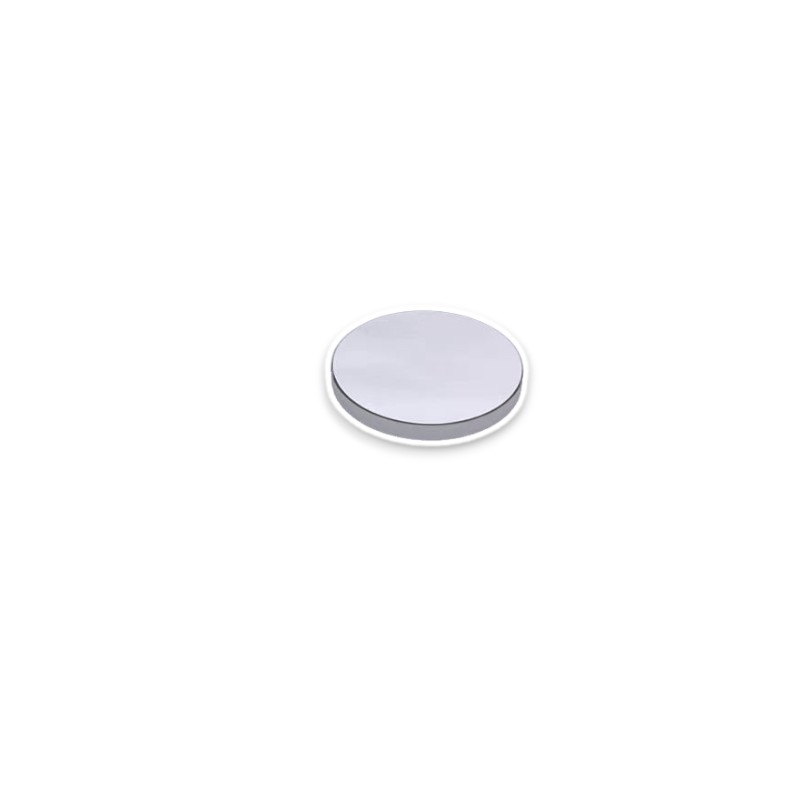

Flat Reflective Protected Silver Mirrors
Silver mirrors are optical mirrors with high-purity silver film as the reflective layer. Coligh produces <500mm high-adhesion silver metal mirrors.
- Reflectivity in the visible to near-infrared band is as high as 95%-99%
- Covered with dense protective layer dielectric film
- Corrosion-resistant, strong stability
- Various customized options for materials, sizes and coating
Flat Reflective Protected Silver Mirrors Description
As a manufacturer of Flat Reflective Protected Silver Mirrors, the silver reflectors we produce use ion sputtering or electron beam evaporation technology to deposit silver film.
- specially designed for visible light to infrared band 450-20um, reflectivity in the visible light to near infrared band is as high as 95%-99%.
- In addition to the metal film layer, there is also a dense dielectric film protection layer, generally made of SiO₂, Al₂O₃, magnesium fluoride or Si₃N₄, which can suppress secondary reflection interference while preventing the metal surface from being scratched or oxidized and prolonging the life of the silver film.
- The protective layer can also protect the silver film from attenuation and has strong environmental stability.
We can supply Silver Coatings with Customizing for specific wavelength ranges:
- 450 nm – 2000 nm (visible to near-IR),
- 400 nm – 1300 nm,
- 400 nm – 12,000 nm (mid-IR).
Customizable Shapes & Sizes & substrate:
- Supports dimensions up to 500 mm in diameter or length.
- Available in circular, rectangular, or irregular geometries (laser-cut to precise specifications).
- Optical glass substrate: Fused silica (UV-IR), BK7, K9.
- Metal Substrates: Aluminum,copper
Reflective Protected Flat Silver Mirrors Detail Display

Flat Reflective Protected Silver Mirrors Technical Datasheet
| Parameter | Description |
| Surface Quality | 40-20 or 20-10 (higher precision available upon request) |
| Substrate Material | K9, UV Fused Silica, Silicon (Si), Copper (Cu), Aluminum (Al), Zinc Selenide (ZnSe), Metal |
| Diameter | Ø5 mm – Ø500 mm, thickness 1 mm – 50 mm (Metal substrates can be customized to larger sizes, e.g., Ø1000 mm) |
| Clear Aperture | >90% or full aperture |
| Angular Tolerance | ±30 arcminutes |
| Shape | Square, Circular, Irregular, or with Drilled Holes |
| Spectral Range | 450 nm – 20,000 nm 450 nm–2000 nm 400 nm–1300 nm 400 nm–12,000 nm |
| Reflectivity | 95%–99% (in visible to near-IR), optimizable to >99.5% with multilayer dielectric enhancement |
| Incidence Angle | 0° (normal incidence), 15°, 30°, 45° optimized design, angle tolerance ±0.5° |
| Coating Technology | Ion Beam Sputtering (IBS), Electron Beam Evaporation, Magnetron Sputtering |
| Protective Layer | SiO₂, Al₂O₃, MgF₂, or Si₃N₄ (anti-oxidation, scratch-resistant) |
Flat Reflective Protected Silver Mirrors Applications
Silver-coated mirrors are suitable for the following fields due to their high reflectivity (>95%) in the visible to near-infrared band:
1. Laser
Silver-coated mirrors can be used as end mirrors or folding mirrors in laser systems for solid-state lasers such as Nd:YAG (1064nm) and Ti:Sapphire (800nm). In addition, they can be used with chirped mirrors to compensate for the group delay dispersion (GDD) of femtosecond lasers
2. Optical instruments
In interferometric measurement systems, silver-coated mirrors can be used in Michelson interferometers and white light interferometers as reference mirrors or beam splitters to improve fringe contrast and measurement accuracy.
3. Astronomical observation
In astronomical telescopes, they can replace traditional aluminum film mirrors, provide higher brightness and color reproduction in the visible light band (450-700nm), and are suitable for deep space observations.
4. Semiconductor
In semiconductor inspection, silver-coated mirrors can reflect broad-spectrum light sources (400-900nm) in wafer defect inspection equipment, supporting nano-level defect identification.
Get Free Quote Of Flat Reflective Protected Silver Mirrors
Related Products
Related News
Optical mirror and optical lens are very important optical components in optical systems. The differences between them are mainly concentrated […]


